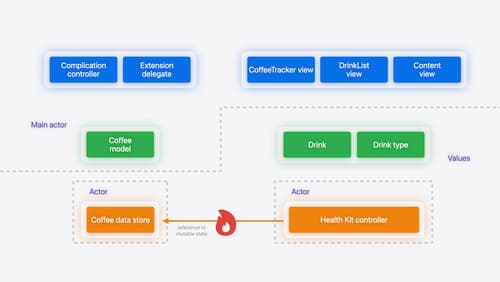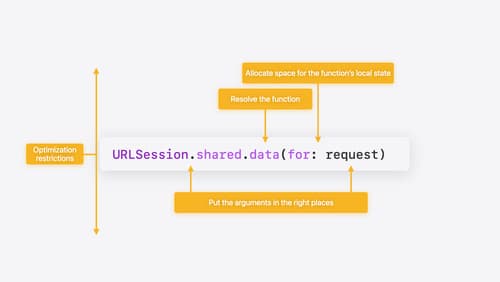how to properly adopt the stringprotocol for a custom struct
Asked on 2025-03-24
1 search
To properly adopt the StringProtocol for a custom struct in Swift, you need to ensure that your struct conforms to the requirements of the StringProtocol. This involves implementing the necessary properties and methods that the protocol requires.
While the specific details of StringProtocol were not covered in the provided context, generally, you would start by defining your struct and then extending it to conform to the protocol. Here's a basic outline of how you might approach this:
struct MyString: StringProtocol {
// Implement required properties and methods here
}
You would need to refer to the Swift documentation for StringProtocol to see the exact requirements, as the protocol may require you to implement properties like startIndex, endIndex, and methods for accessing characters, among others.
For more detailed guidance on protocols and their adoption in Swift, you might find the session A Swift Tour: Explore Swift’s features and design helpful, as it covers protocols and their use in Swift.

A Swift Tour: Explore Swift’s features and design
Learn the essential features and design philosophy of the Swift programming language. We’ll explore how to model data, handle errors, use protocols, write concurrent code, and more while building up a Swift package that has a library, an HTTP server, and a command line client. Whether you’re just beginning your Swift journey or have been with us from the start, this talk will help you get the most out of the language.

Migrate your app to Swift 6
Experience Swift 6 migration in action as we update an existing sample app. Learn how to migrate incrementally, module by module, and how the compiler helps you identify code that’s at risk of data races. Discover different techniques for ensuring clear isolation boundaries and eliminating concurrent access to shared mutable state.

Explore Swift performance
Discover how Swift balances abstraction and performance. Learn what elements of performance to consider and how the Swift optimizer affects them. Explore the different features of Swift and how they’re implemented to further understand the tradeoffs available that can impact performance.
